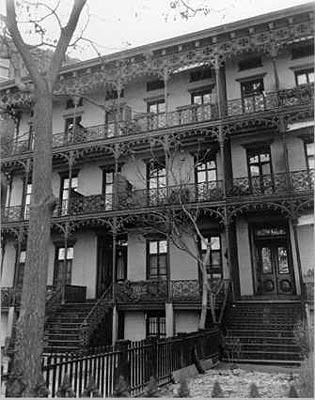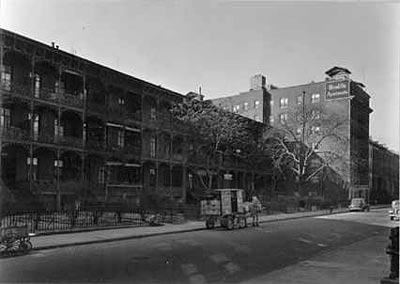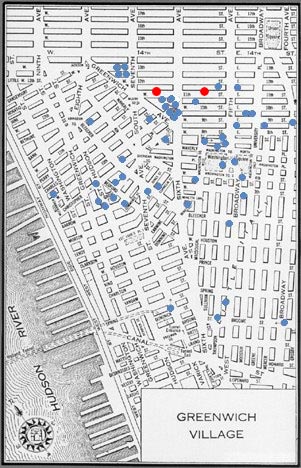| photography
I've linked to Berenice Abbott before. I may have linked to this site before but, if I did, I don't remember the cool maps showing the locations of the photographs. Abbott photographed a changing New York in the late 30s. This is the New York that my dad grew up in.
Berenice Abbott's Changing New York
|
New York dominates … overwhelms us with its incongruous magnificence, its power and voluptuousness … buildings fifty stories high, covered with marble … straight lines everywhere, horizontal and vertical … a city of rectangles, harsh and brilliant, the center of an intense life which it sends out in all directions … New York is wretched and opulent, with its countless tiny brick houses squatting beneath the marble palaces which house banks and industrial offices. But New York is the only city in the world rich enough in money, vitality, and men to build itself anew … the only city sufficiently wealthy to be modern.
It was this New York, as portrayed by the French historian Bernard Fay in 1929, that greeted the young Berenice Abbott upon her return to the city after an eight-year sojourn in Paris. It was a metropolis of compelling architecture and seemingly boundless energy that became Berenice Abbott’s "Fantastic Passion."
| |


|
WROUGHT IRON ORNAMENT: 112-114 West 11TH STREET
FEBRUARY 3, 1937. ABBOTT FILE 198
THREE-DECKER HOUSES: WEST 11TH STREET, BETWEEN SIXTH AND SEVENTH AVENUES
FEBRUARY 3, 1937. ABBOTT FILE 200
On the day she photographed Bread Store, Abbott took two views of Rhinelander Gardens, a row of balconied houses on West 112-114 11th Street. Set back on their lots to allow for ample front yards and adorned with neo-Gothic balconies, these houses were designed in 1855 by James Renwick, architect of Grace Church (1845) and St. Patrick's Cathedral (1878-1888). They were built as rental properties for William C. Rhinelander, a powerful Greenwich Village landowner.
In Plate 21, Abbott focused on the decorative ironwork of the balconies at the expense of showing the entire row. In Plate 22, she showed the row, juxtaposed with the Unadilla Apartments (1899). A Sheffield Farms milkwagon, similar to the one she photographed on nearby Grove Street, had stopped mid block, followed by an ice delivery wagon (left).
Although Abbott had a keen eye for unnoticed but distinctive ironwork, the fanciful balconies of Rhinelander Gardens were well known. The Gardens were near other Village landmarks on Abbott's itinerary: Rhinelander Row and Patchin Place. The West 11th Street row survived until 1958, when it was torn down for a much-needed new public school. The Unadilla Apartments still stand.
| |
[more]

The blue dots on the map show where Abbott's pictures were taken. The left red dot is, as near as I can tell, the location of my grandfather's studio — 125 West Eleventh Street. Probably across from the Unadilla Apartments. I will find out Saturday. We will be staying at the right red dot — the Larchmont Hotel. I will be taking pictures and keeping a journal. I could promise that I would try and post some comments during the trip but I probably won't. You never know, though. I will return on the 29th. I hope you remember to check back. See you then...*poof*! |

